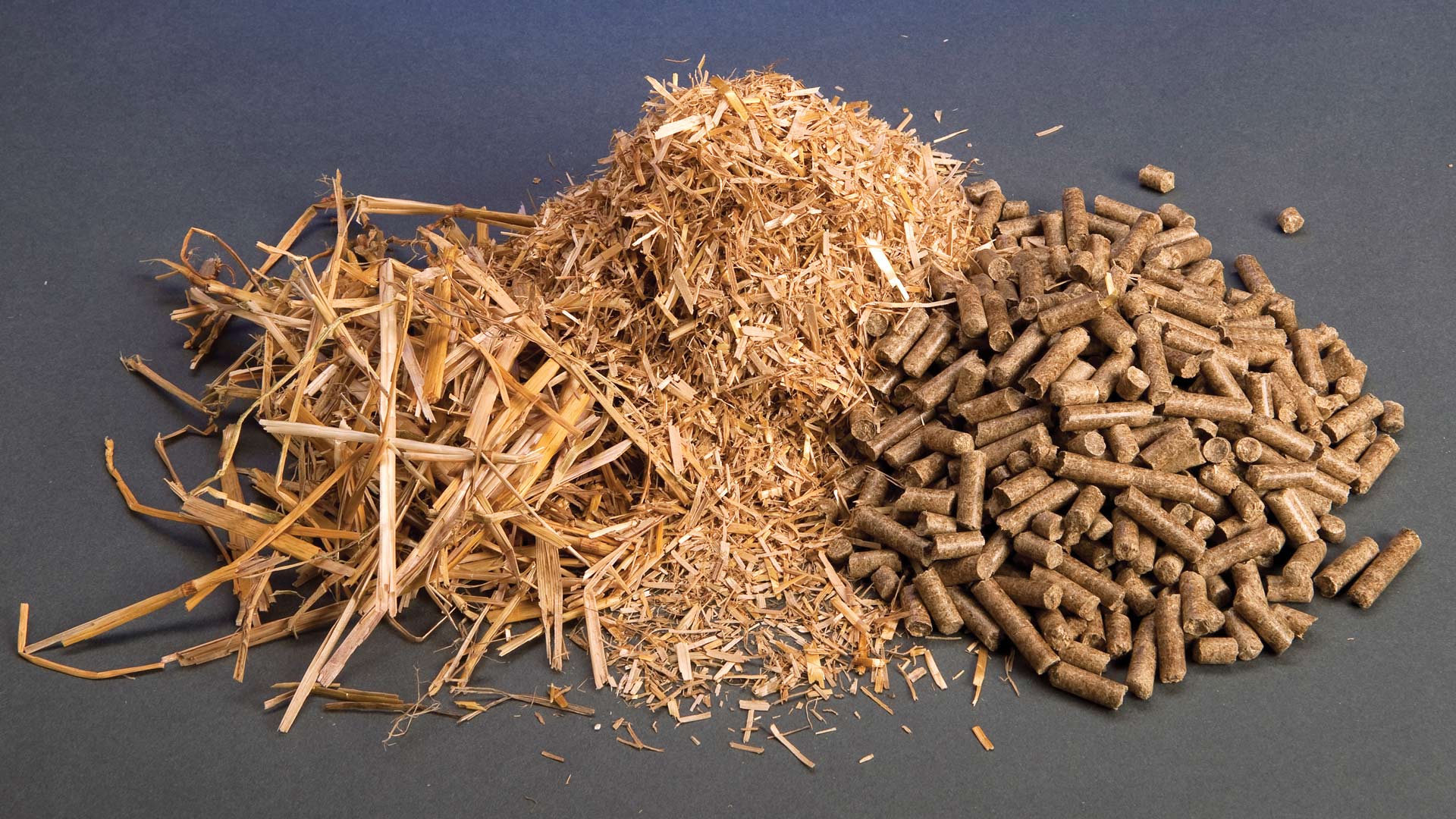
–By Amanda Wanke
Yes, this winter was a mild one. But there are plenty of years when heating costs can be painful, especially to operators of large business operations such as greenhouses and turkey producers. As consumers look for alternative, renewable energy, one source AURI has been examining closely is biomass.
Biomass refers to any product from agriculture or forestry that can be fed into a combustor and burned to generate heat. It can come in bulk form such as straw bales, wood chips, and sawdust, or in a densified form such as pellets and cubes.
To further examine the use of this value-added, renewable energy, AURI recently facilitated two projects with different scopes. The Minnesota Biomass Heating Feasibility Guide aims to help turkey producers and greenhouse operators evaluate the feasibility of using biomass for heating. The Midwest Biomass Inventory Assessment is a compilation of the biomass resources within the Midwest.
Minnesota Biomass Heating Feasibility Guide
The Minnesota Biomass Heating Feasibility Guide, conducted by DLF Consulting, aims to help turkey producers and greenhouse operators in rural areas to understand the feasibility of using biomass for heating. Why the focus on turkey producers and greenhouse operators?
“The objective of this project was to help the turkey and greenhouse industries reduce their heating costs, thereby improving their competitiveness and profitability and hopefully leading to further growth and economic activity for these industries in Minnesota,” explains AURI Project Development Director Randy Hilliard, who was the team leader for the feasibility guide project.
“Part of AURI’s role is to help these industries stay competitive and grow in Minnesota, and we hope this research gives them some options to do just that,” says AURI Scientist Al Doering.
Minnesota has a tremendous wealth of biomass inventory—around 25 million tons each year—as well as suppliers, so the state is poised to grow this industry as demand grows.
The feasibility guide serves as a resource on the following topics:
- Biomass resources – agricultural and forestry
- Biomass fuel suppliers in Minnesota
- Biomass fuel handling examples
- Biomass heating system suppliers and products
- Biomass heating system components
- Biomass heating system costs and financial implications
- Financial sensitivity analysis
“This guide shows the positive economics and return on investment of using a biomass boiler for thermal heat, specifically when competing against propane,” says Doering. “The guide shows that the system will pay for itself in six years in fuel savings alone.”
Midwest Biomass Inventory Assessment
The Midwest Biomass Inventory Assessment, which came out of AURI’s involvement with the Heating the Midwest with Renewable Biomass Initiative, provides a snapshot of potential biomass resources within the Midwest. As part of the assessment work, a regional biomass inventory database of previously completed state-level assessments and datasets was also developed. The report presents inventories of crop residue, energy crops and hay, and forest and mill residue in seven Midwestern states: Illinois, Iowa, Michigan, Minnesota, North Dakota, South Dakota, and Wisconsin.
“Agriculture residue, such as straw, corn stover, and turkey litter, offer the largest quantity of biomass potential,” says Doering. “The amount of wood residue isn’t growing, so it’s really the crop residue that offers the largest supply. However, we caution people to realize the difference between supply ‘inventory’ and ‘availability.’”
Biomass inventory includes all of the biomass that exists. Biomass availability is what can be collected feasibly and economically without detrimental effects on the land.
“This inventory can serve as a platform to begin the development of biomass-related projects,” says Becky Philipp, AURI team leader for the project.
The inventory was conducted by David Ripplinger and Ridhima Katyal with North Dakota State University’s Department of Agribusiness and Applied Economics.
“Biomass can play a role in offering affordable, renewable energy options that consumers are looking for,” says Philipp.
Find both reports at www.auri.org
A special thanks to our funding partners on these projects:
Greater Bemidji, Minnesota Power, Southwest Clean Energy Resource Team, Southern Minnesota Initiative Foundation, and Southwest Minnesota Initiative Foundation.
What is the Heating the Midwest Initiative?
The Heating the Midwest Initiative aims to: “Advance biomass thermal heating in the Midwest for a more sustainable future, while improving the economic, environmental and social well-being of the region.” The initiative is comprised of a group of volunteers representing industry, government, nonprofit, university and tribal organizations with a serious interest in growing awareness and usage of agricultural and woody biomass and dedicated energy crops for thermal fuel for heat in the Midwest United States.
Since Heating the Midwest’s inception, AURI Project Development Director Becky Philipp has been actively involved as the team leader for the initiative’s Biomass Resources Action Team. AURI’s goal was to partner in raising awareness around biomass-fueled thermal energy, and to collaborate on related activities that contribute to the overarching goal of future economic prosperity, job creation and energy security in the Midwest through the use of agricultural biomass and woody biomass feedstocks.
